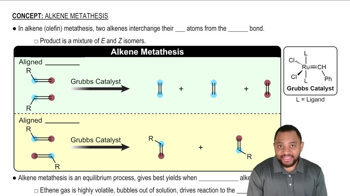Predict the major products of the following alkene halogenation reactions. [D is the symbol for deuterium, an isotope of hydrogen.]
(a)

 Verified step by step guidance
Verified step by step guidance Verified video answer for a similar problem:
Verified video answer for a similar problem:



 1:18m
1:18mMaster Overview of Hydrohalogention. with a bite sized video explanation from Johnny
Start learning